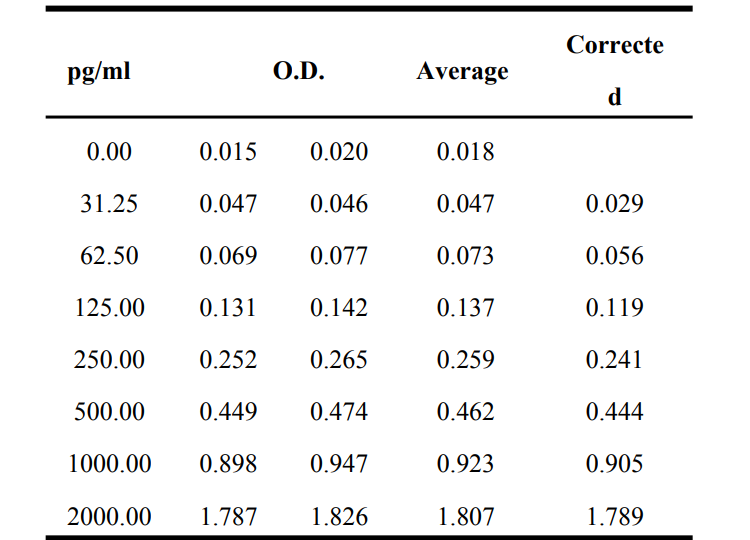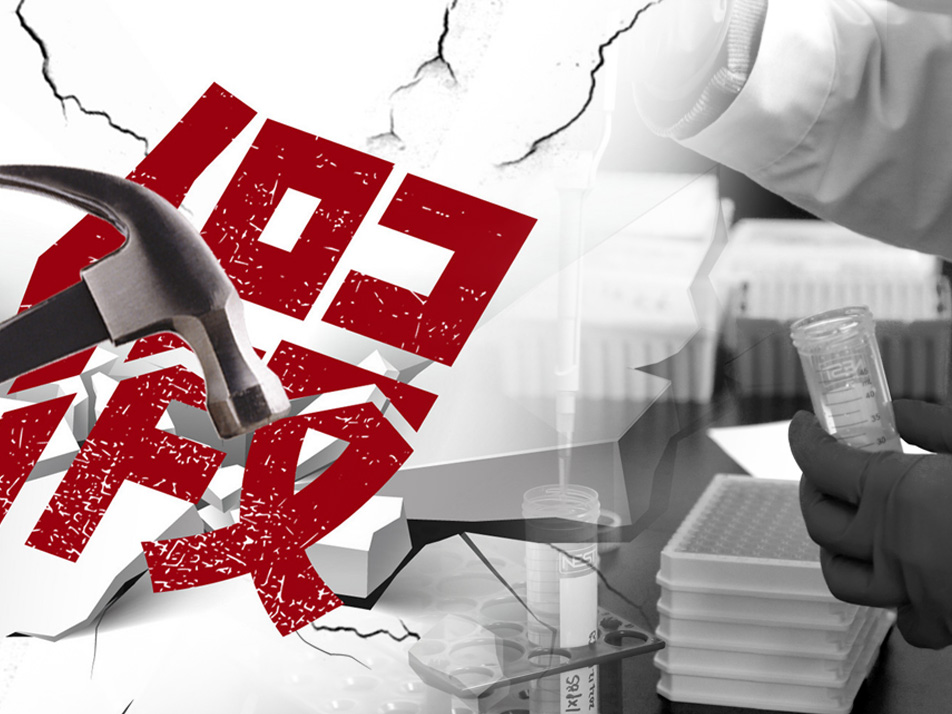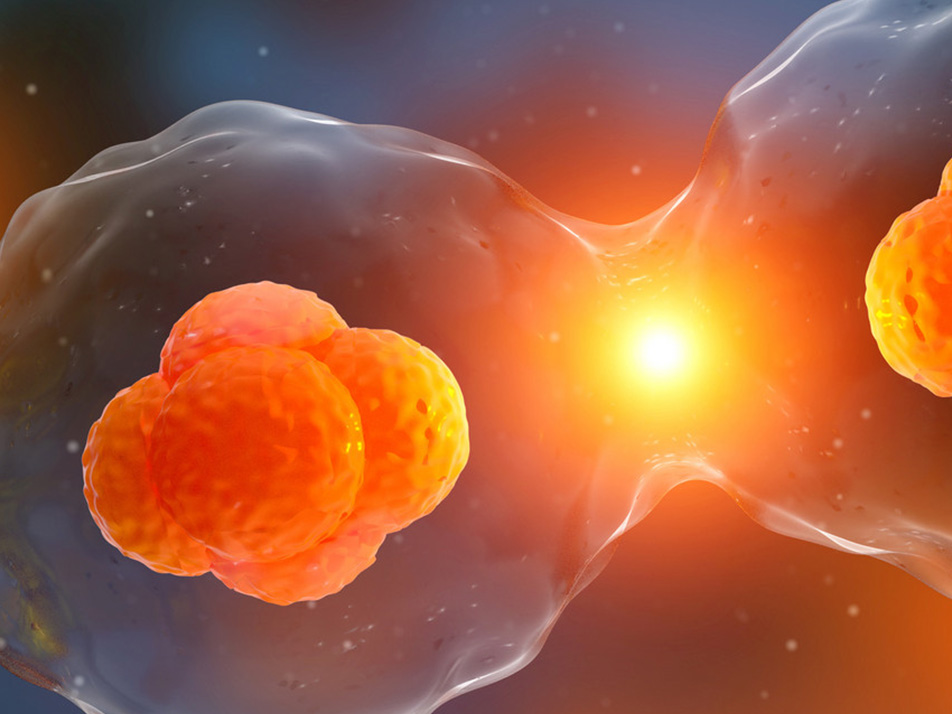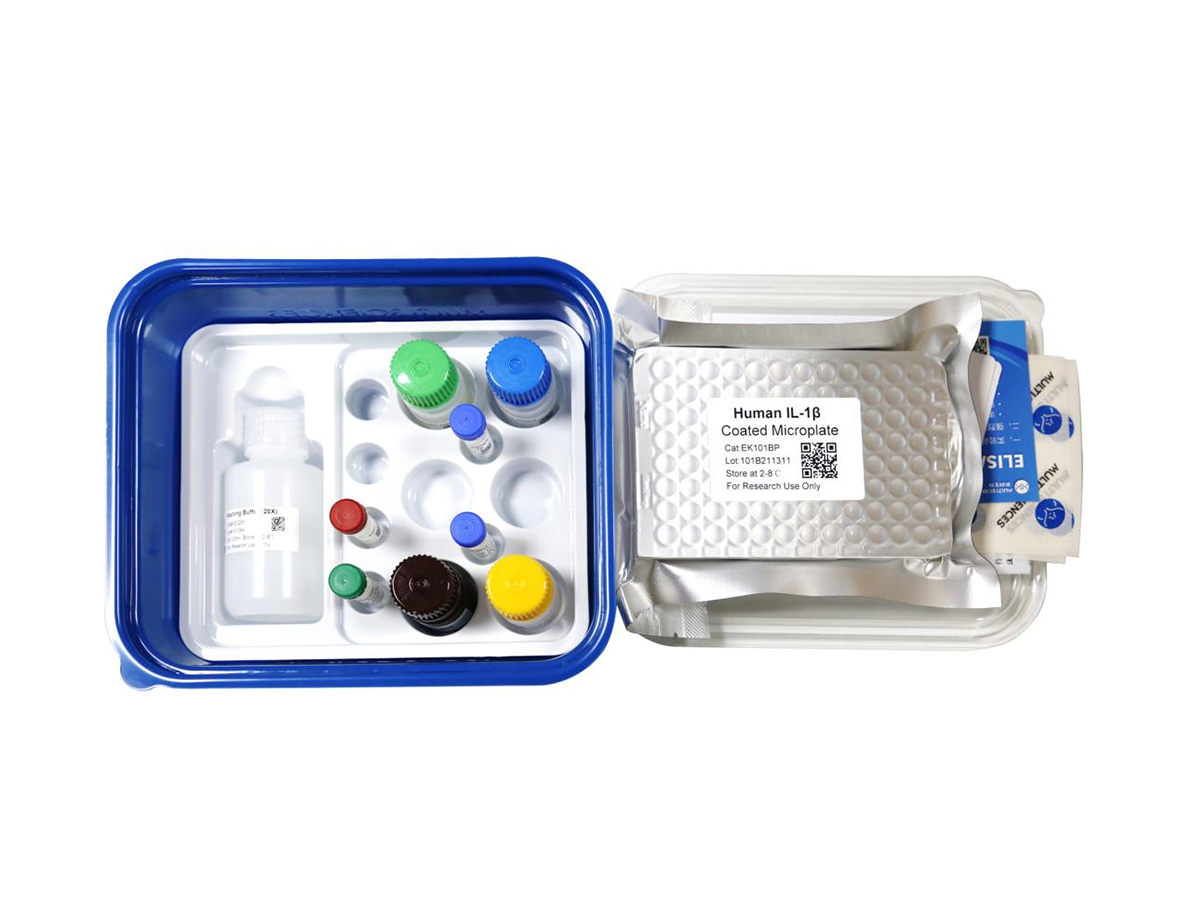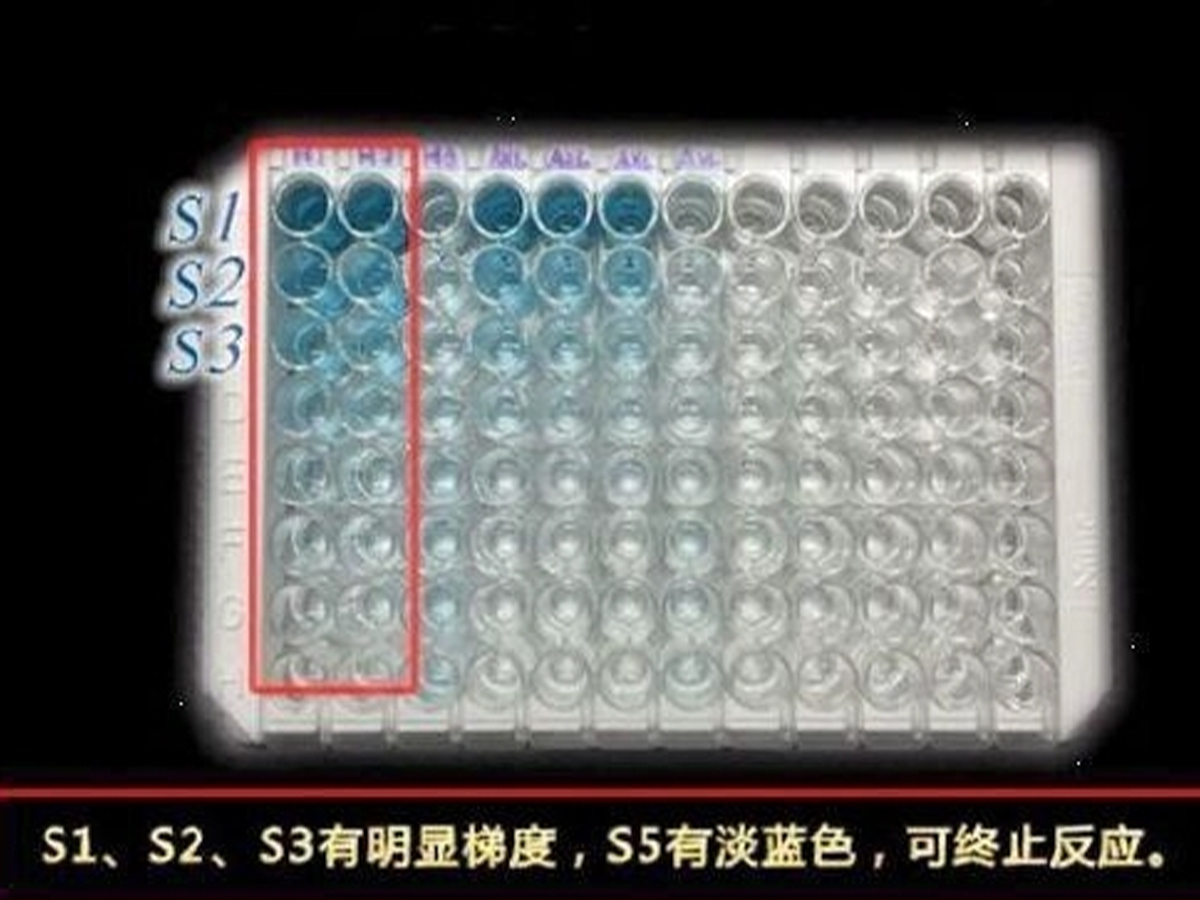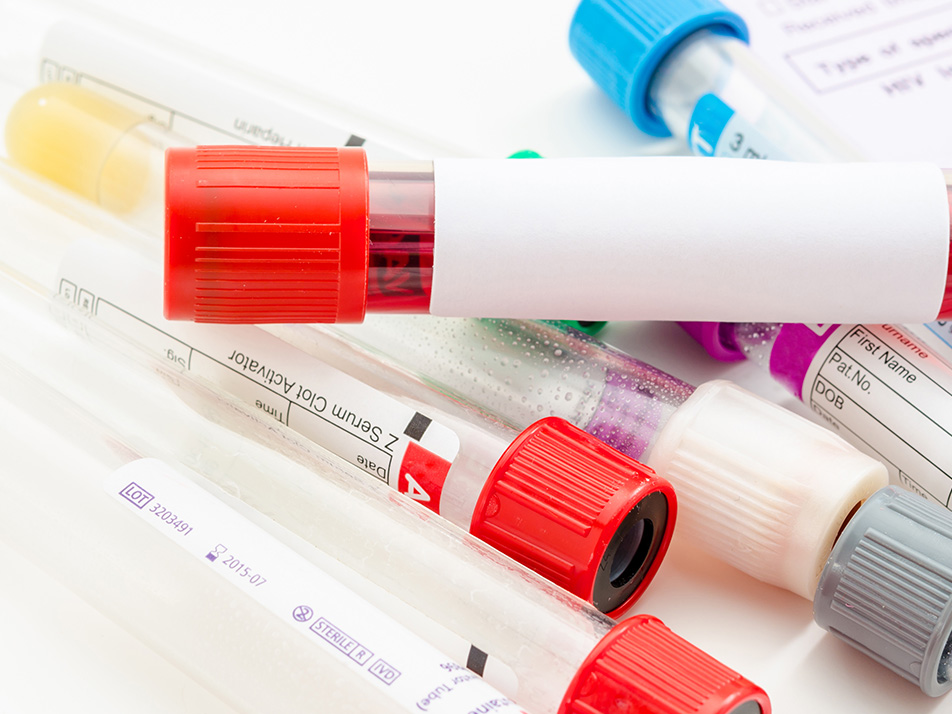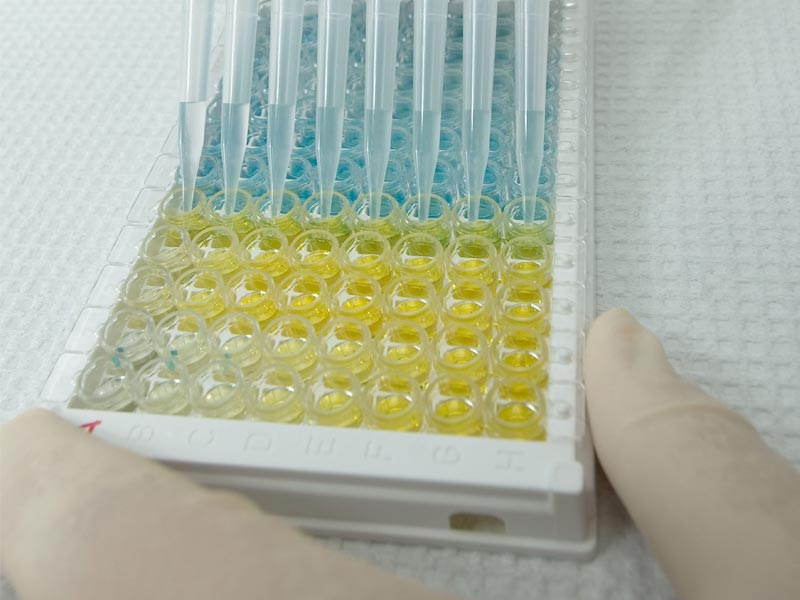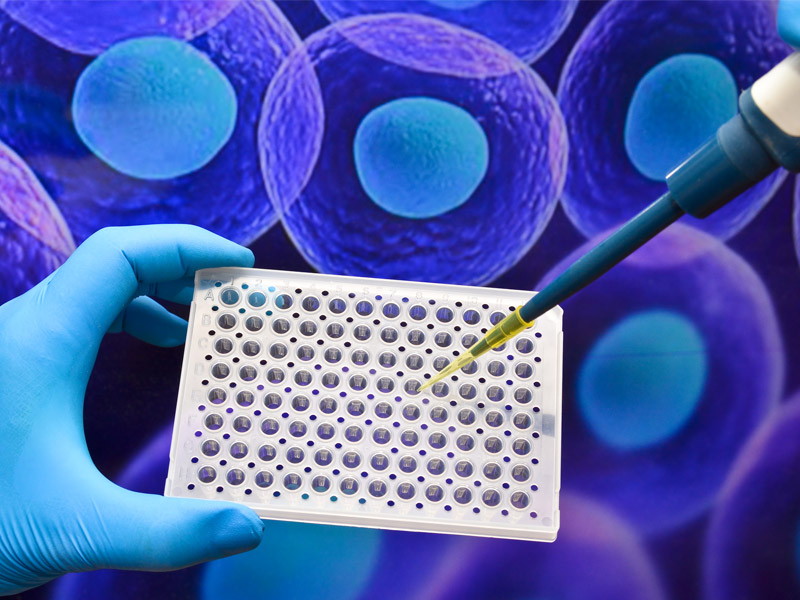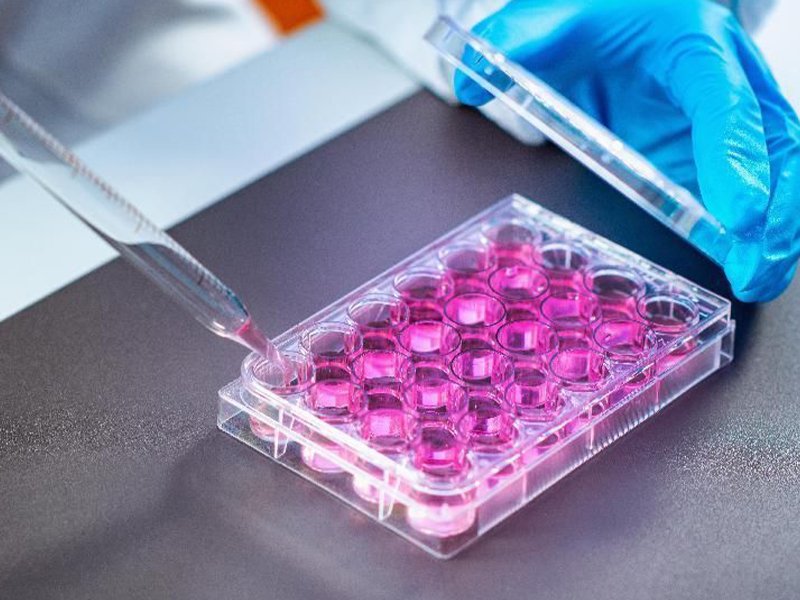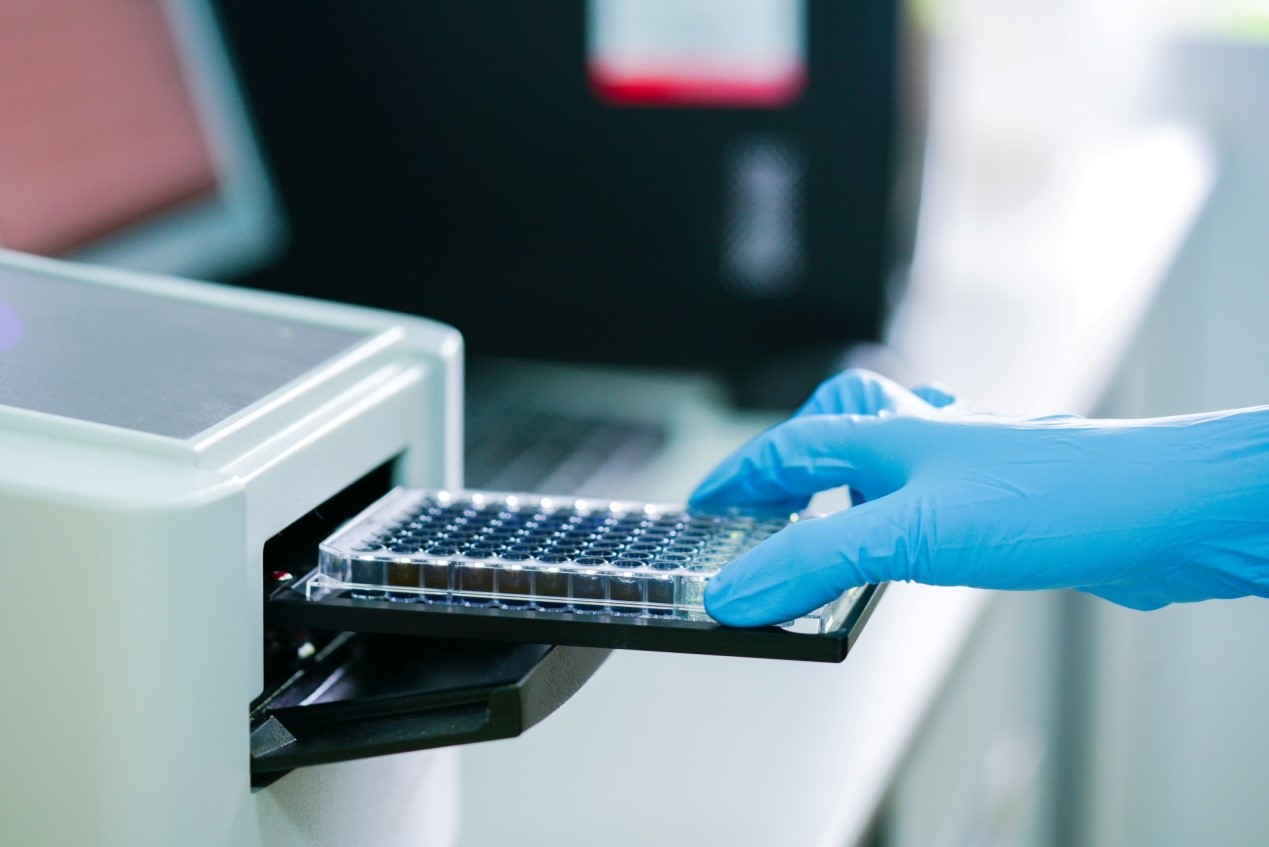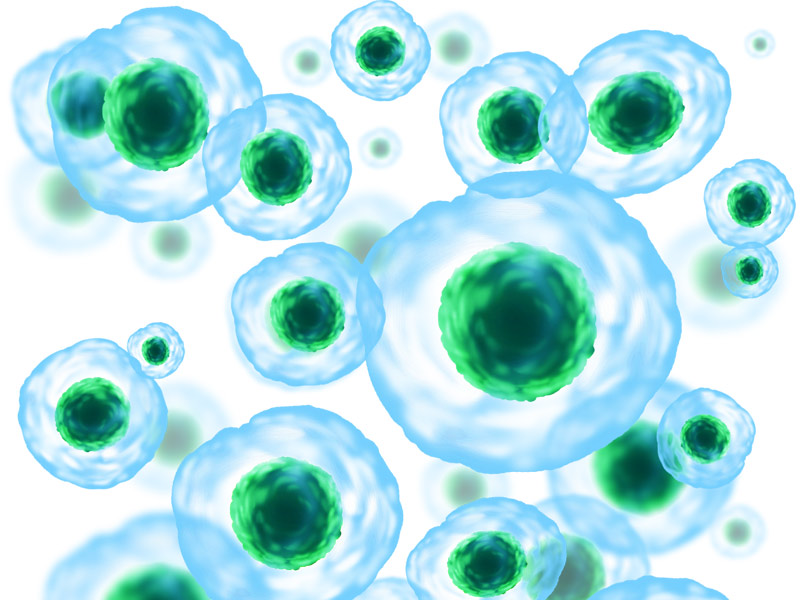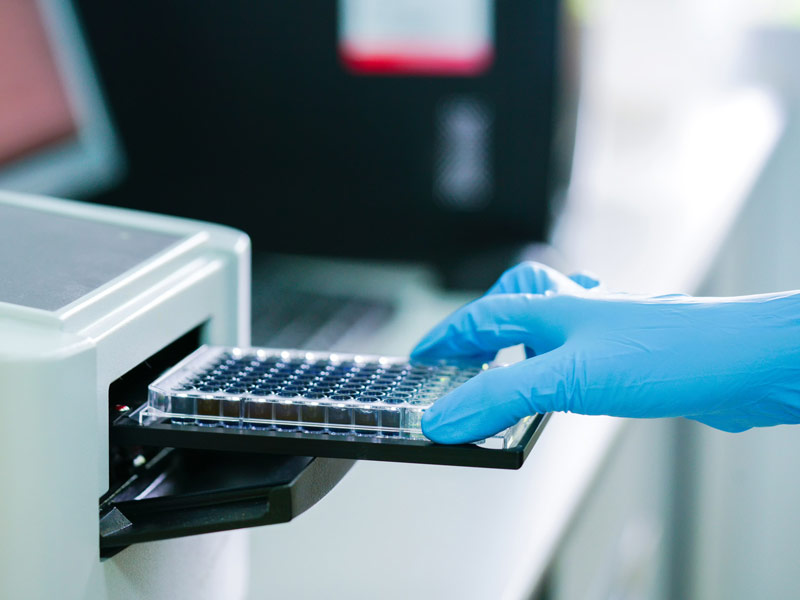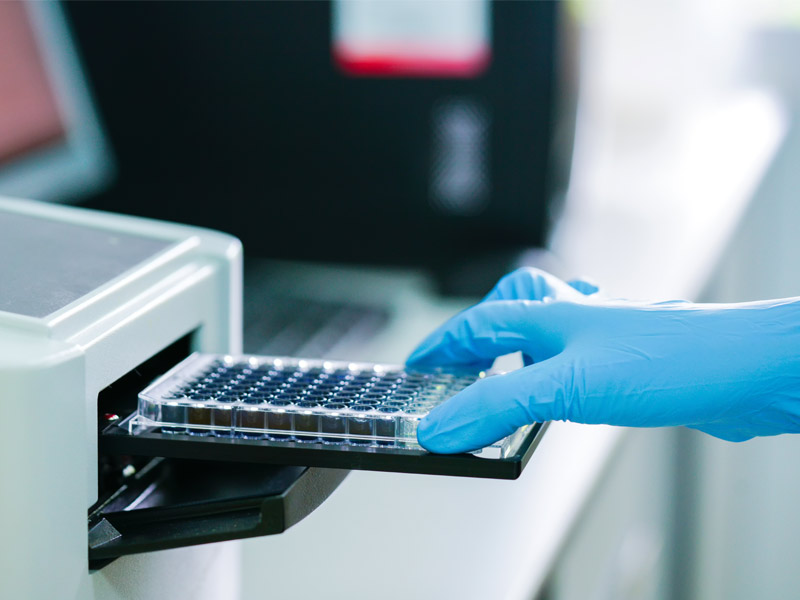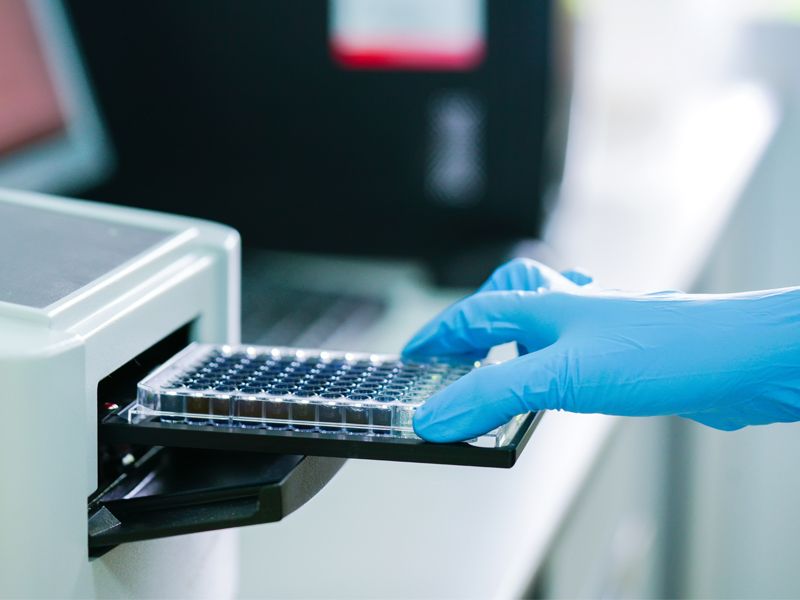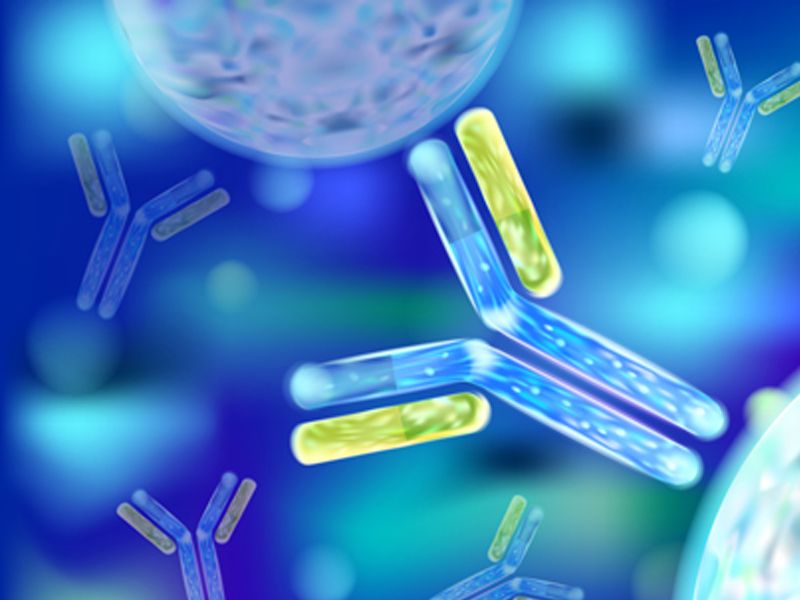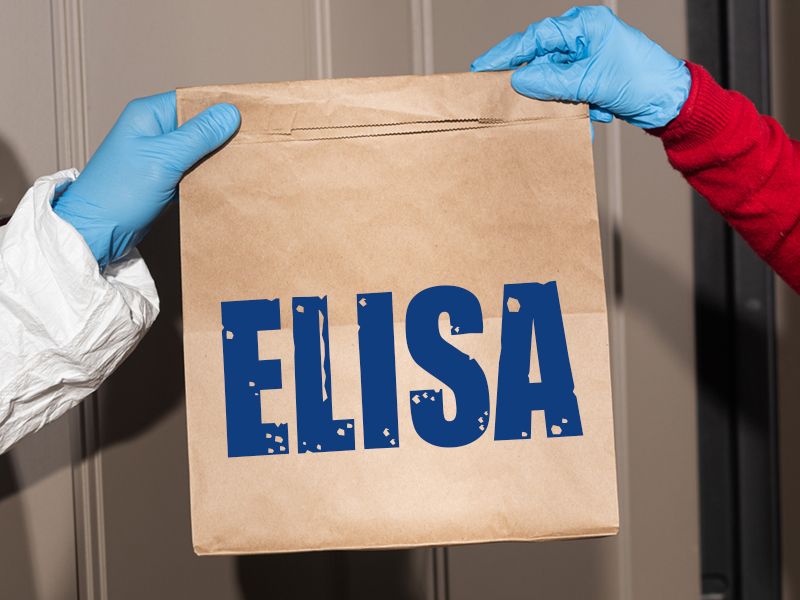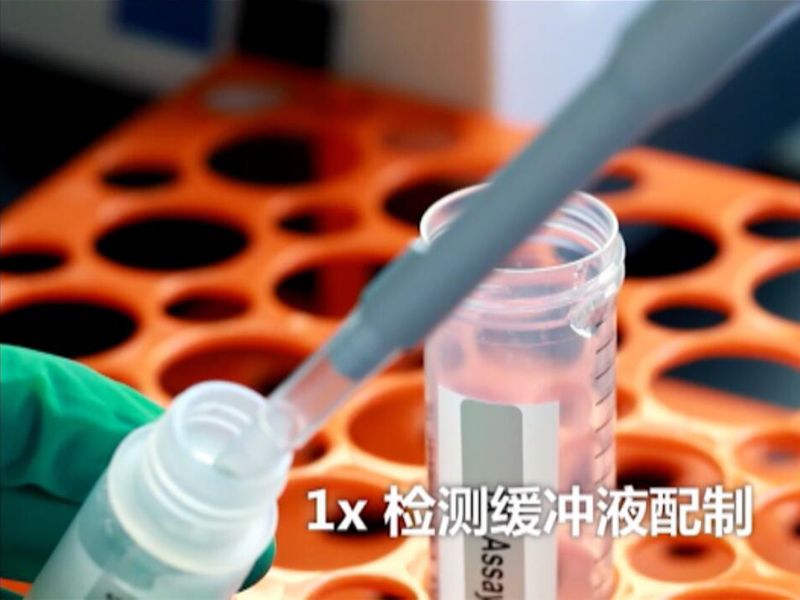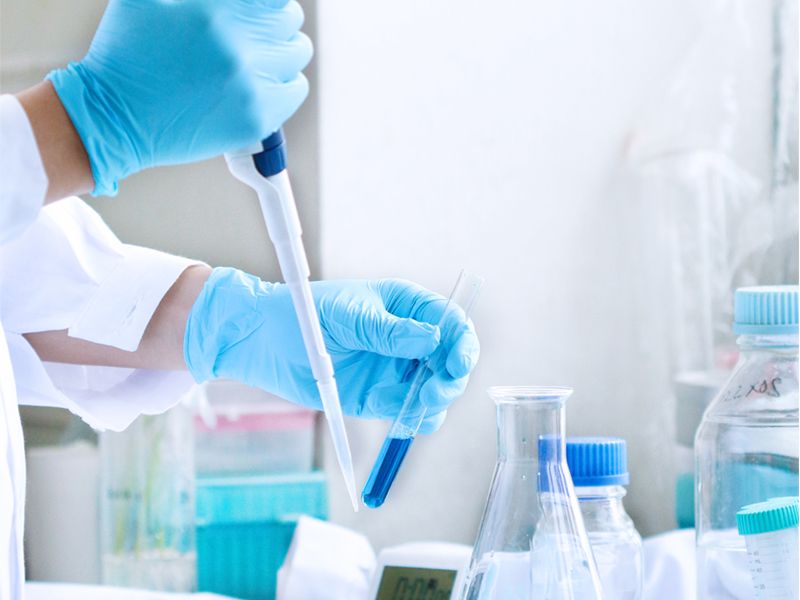Mouse M-CSF ELISA Kit检测试剂盒(酶联免疫吸附法)
¥1,600.00 – ¥2,650.00
因产品会迭代升级,具体实验步骤请按纸质版说明书操作
- 分子靶点:CSF1, MCSF
- 种属:小鼠 (Mouse)
- 样本类型:血清,血浆,细胞培养上清及其他生物学样本
- 检测样本体积:20 μL
- 灵敏度:6.06 pg/mL
- 检测范围:31.25 pg/mL - 2000 pg/mL
- 回收率:78% - 112%
在售SKU:70-EK2144-48, 70-EK2144-96
描述
| 商品名 |
Mouse M-CSF ELISA Kit (小鼠巨噬细胞集落刺激因子 (M-CSF) ELISA试剂盒) |
|---|---|
| 检测方法 |
双抗夹心法 |
| 精密度 |
板内变异系数:7.1% - 8.6%;板间变异系数:7.2% - 8.8% |
| 样本类型 |
血清,血浆,细胞培养上清及其他生物学样本 |
| 检测样本体积 |
20 μL |
| 灵敏度 |
6.06 pg/mL |
| 检测范围 |
31.25 pg/mL - 2000 pg/mL |
| 回收率 |
78% - 112% |
| 平均回收率 |
0.92 |
| 板式 |
96孔板,可拆 |
| 保存 |
试剂盒未拆开,4℃保存。已拆开,标准品-20℃保存,其它4℃保存。 |
| 运输条件 |
4℃蓝冰运输 |
| 组分 |
|
检测原理:本试剂盒采用双抗体夹心酶联免疫吸附检测技术。特异性抗小鼠M-CSF抗体预包被在高亲和力的酶标板上。酶标板孔中加入标准品、待测样本和生物素化的检测抗体,经过孵育,样本中存在的M-CSF与固相抗体和检测抗体结合。洗涤去除未结合的物质后,加入辣根过氧化物酶标记的链霉亲和素(Streptavidin-HRP)。洗涤后,加入显色底物TMB,避光显色。颜色反应的深浅与样本中M-CSF的浓度成正比。加入终止液终止反应,在450 nm波长(参考波长570 - 630 nm)测定吸光度值。
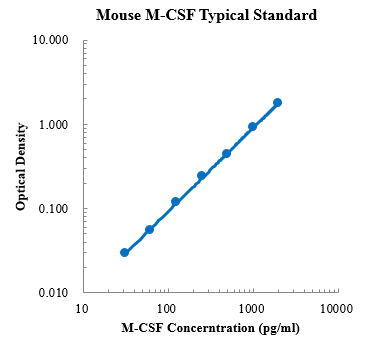
分子信息
CSF1 分子靶点信息概述
- 分子名:CSF1, colony stimulating factor 1
- 别名:M-CSF; MCSF; MGC31930
- 全称:macrophage colony stimulating factor 1; colony stimulating factor 1 (macrophage)
CSF1 分子靶点综述
巨噬细胞集落刺激因子(M-CSF)也称为集落刺激因子1(CSF1)是由成骨细胞分泌的细胞因子。它是造血生长因子,参与单核细胞、巨噬细胞和骨髓祖细胞的增殖、分化和存活。血管壁局部产生的M-CSF会促使动脉粥样硬化的进程。M-CSF在肾病中发挥了作用,包括急性肾损伤(AKI)和慢性肾功能衰竭(CRF)。单核细胞的慢性活化会导致CRF患者多种代谢、血液和免疫异常。在AKI患者中,M-CSF可促进修复,但也有相反的作用,促使促炎性巨噬细胞增殖。
小鼠 Mouse Csf1 分子靶点信息
- 分子名:Csf1, colony stimulating factor 1 (macrophage)
- 别称:
- C87615
- colony stimulating factor, macrophage
- colony-stimulating factor-1
- CSF-1
- Csfm
- expressed sequence C87615
- M-CSF
- op
- osteopetrosis
- 基因序列:NCBI_Gene: 12977
- 蛋白序列:
小鼠 Mouse Csf1 靶点分子功能(预测)
Enables macrophage colony-stimulating factor receptor binding activity and protein homodimerization activity. Involved in several processes, including macrophage colony-stimulating factor signaling pathway; microglial cell proliferation; and positive regulation of gene expression. Acts upstream of or within several processes, including mammary gland development; osteoclast proliferation; and positive regulation of myeloid leukocyte differentiation. Located in extracellular space. Part of CSF1-CSF1R complex. Is expressed in several structures, including alimentary system; brain; genitourinary system; hemolymphoid system gland; and hindlimb long bone. Used to study osteopetrosis. Human ortholog(s) of this gene implicated in interstitial cystitis. Orthologous to human CSF1 (colony stimulating factor 1).
引用文献统计
该产品被引用的文献总数为:5
- Akkermansia muciniphila promotes type H vessel formation and bone fracture healing by reducing gut permeability and inflammation
影响因子:4.651刊物:Disease Models & Mechanisms发表日期:2020/12/1 - A vascular disrupting agent overcomes tumor multidrug resistance by skewing macrophage polarity toward the M1 phenotype
影响因子:6.491刊物:CANCER LETTERS发表日期:2018/1/11 - Interleukin-34-orchestrated tumor-associated macrophage reprogramming is required for tumor immune escape driven by p53 inactivation
影响因子:25.5刊物:IMMUNITY发表日期:2024-09-24 - Bio-functional immunomodulatory europium-doped hydroxyapatite nanorods for osteochondral repair via CDH5-RAS-RAF-MEK-ERK-CSF1 axis
影响因子:13.3刊物:CHEMICAL ENGINEERING JOURNAL发表日期:2024-02-05 - Preclinical and early clinical studies of a novel compound SYHA1813 that efficiently crosses the blood–brain barrier and exhibits potent activity against glioblastoma
影响因子:14.5刊物:Acta Pharmaceutica Sinica B发表日期:2023-09-22
ELISA试剂盒操作常见问题查看更多ELISA试剂盒操作步骤技术文章
查看更多ELISA试剂盒操作步骤技术文章
操作步骤
文章目录[隐藏]
- ELISA操作常见问题
- 小心!你的 ELISA 试剂盒可能是假的
- 开学学习计划,如何收集ELISA检测样本——细胞
- 开学学习计划,如何选择ELISA试剂盒
- 开学学习计划,ELISA从新手到入门!
- 一文掌握ELISA实验显色判断、数据分析及标曲拟合
- 血清OR血浆,哪个是ELISA的菜
- ELISA通关必备丨数据篇丨标准曲线不佳
- ELISA通关必备丨操作篇丨常见问题及解决方案
- ELISA通关必备丨操作篇丨溶解与稀释标准品
- ELISA通关必备丨样本篇丨不常见样本
- ELISA通关必备丨样本篇丨常见样本丨细胞
- ELISA通关必备丨如何选择试剂盒
- ELISA通关必备丨基础知识
- 真?假?ELISA试剂盒选择要小心
- ELISA常见类型一 | 双抗夹心法,你要的都在这里!
- ELISA常见类型二 | 竞争法,五分钟搞定!
- 叮!联科向您投递了个ELISA实验操作干货包,请查收~
- 【视频】ELISA实验操作步骤演示视频教程
- ELISA 组织样本的处理—大鼠组织
- 【视频】ELISA实验原理与常见问题分析
- 查看更多ELISA操作相关问题
ELISA操作常见问题
查看更多ELISA操作相关问题
引用文献
文章目录[隐藏]
- Akkermansia muciniphila promotes type H vessel formation and bone fracture healing by reducing gut permeability and inflammation
- A vascular disrupting agent overcomes tumor multidrug resistance by skewing macrophage polarity toward the M1 phenotype
- Interleukin-34-orchestrated tumor-associated macrophage reprogramming is required for tumor immune escape driven by p53 inactivation
- Bio-functional immunomodulatory europium-doped hydroxyapatite nanorods for osteochondral repair via CDH5-RAS-RAF-MEK-ERK-CSF1 axis
- Preclinical and early clinical studies of a novel compound SYHA1813 that efficiently crosses the blood–brain barrier and exhibits potent activity against glioblastoma
Akkermansia muciniphila promotes type H vessel formation and bone fracture healing by reducing gut permeability and inflammation
A vascular disrupting agent overcomes tumor multidrug resistance by skewing macrophage polarity toward the M1 phenotype
Interleukin-34-orchestrated tumor-associated macrophage reprogramming is required for tumor immune escape driven by p53 inactivation
Bio-functional immunomodulatory europium-doped hydroxyapatite nanorods for osteochondral repair via CDH5-RAS-RAF-MEK-ERK-CSF1 axis
Preclinical and early clinical studies of a novel compound SYHA1813 that efficiently crosses the blood–brain barrier and exhibits potent activity against glioblastoma



